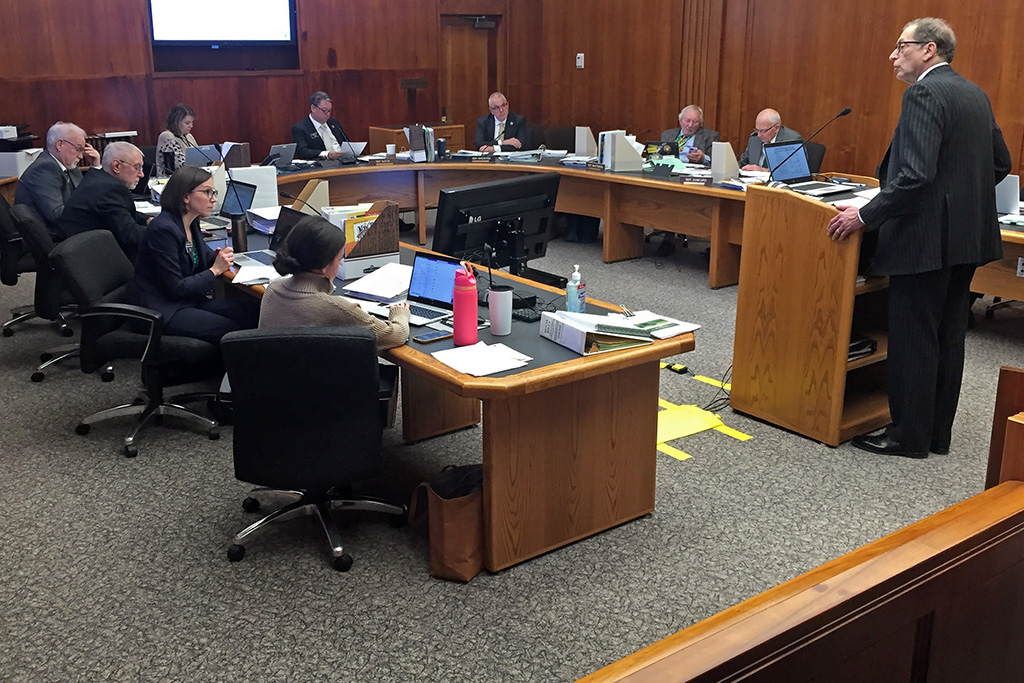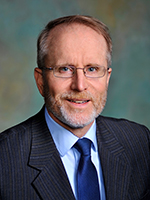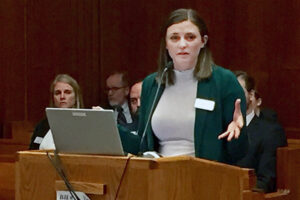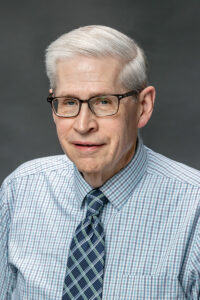Inflation key issue for UND, state during legislative session
UND President Armacost and University officials address ND Legislature’s House Appropriations Committee

Inflation – the issue affecting the budgets of Americans nationwide – was on the minds of educators and legislators when UND President Andrew Armacost testified Wednesday in Bismarck before the House Appropriations Committee of the North Dakota Legislature.
From increasing food and energy costs to attracting and retaining employees to minimizing the cost of education to students, dealing with the ongoing impacts of inflation was a key part of the discussion.

“The inflationary impacts that we’re reading about are significant,” Armacost told legislators. “We want to help the committee understand the tradeoffs we’re facing.”
In his testimony to the committee on Tuesday, Mark Hagerott, chancellor for the North Dakota University System, said the State Board of Higher Education had discussed the issue in detail as part of an inflation study group.
“We had two UND economists come to speak to us,” he noted. “They said that over history, when you have inflationary periods, families will prioritize energy, food, clothing and education, and workforce training becomes a luxury good. Families are facing what will be a shock in increasing tuition, room, board, fees,” Hagerott stated.
Inflation shock
“It’s getting beyond the span of control of the presidents to handle this inflationary environment,” he added. “The presidents are laying out what they’re trying to deal with – COVID, combined with inflation, combined with all these things – is a shock to the system.”

Hagerott said that while he recognized the Legislature “had no more responsibility” to address inflation, he called for higher education and legislative leaders to “mutually problem-solve” the issue because “we need help.”
During her presentation to the committee, Karla Mongeon-Stewart, UND vice president for finance and operations, outlined how inflation is impacting the University. For example, a 15% increase in health insurance for state employees will add nearly $2 million to UND’s budget. The tuition portion of salary and benefits will increase to $14.4 million.
In addition, Mongeon-Stewart said the University’s utility expenses have increased by 43%; food costs are up 28%; maintenance and custodial supply costs increased 27%; IT and software costs are up 15 to 20%; and the price of online subscriptions used by students and researchers have increased by 10 to 20%.
“We’ve been moving money around and making cuts in other areas, but if you’re able to provide any relief on the inflationary factor, it would go directly to these operations,” she told committee members. “That equates to about $5.6 million a year.”

Armacost, along with Joshua Wynne, dean of the School of Medicine & Health Sciences, and UND Student Body President Faith Wahl testified not only about the University’s proposed budget for the 2023-24 biennium, but also about key accomplishments and the challenges ahead.
Successes and challenges
“We’ve had extraordinary transformation through the great support of the Legislature,” Armacost noted, citing completion of the new Nistler College of Business & Public Administration, a continued increase in UND’s enrollment and a significant rise in research funding.
In addition to inflation, Armacost said challenges the University faces include the impact of salaries for faculty and staff, which affect UND’s ability to recruit and retain talent. Increasing interest rates also will affect construction costs on future capital projects, he added.

And although UND has yet to experience the nationwide impact of declining enrollment, it’s expected to be felt in the Upper Midwest by 2026.
“When we draw a national audience for many of our outstanding programs, certainly the national trends that we’re seeing with this enrollment decline will undoubtedly impact the University and the entire (North Dakota university) system,” he explained.
The process of repatriating the remains of Native American ancestors and artifacts discovered last year on UND’s campus continues as a major challenge, but one Armacost said UND has well in hand.
Another ongoing concern is behavioral health issues affecting students, faculty and staff.
“There are some initiatives that will amplify the support we provide to our students on campus,” Armacost said.
Student perspective
Wahl said UND’s students are fully behind all the priorities President Armacost and VP Stewart presented. She said funding the tuition portion of the state’s salary and benefits increase is “a huge priority for students this year.” Otherwise, Wahl said it raises questions about “what tuition is going to look like in the future.”

“If tuition increases, that burden is going to shift to our families, and we’re likely going to see a decrease in the number of students who are willing to attend higher education institutions or continue in higher education,” Wahl noted.
“I think one of the competitive advantages that North Dakota has is affordable education,” she continued. “I know that’s one of the reasons I stayed.
“In order to maintain that competitive advantage North Dakota has in higher education, I think it’s a huge ask for students to help fund that tuition portion,” she added.
Wynne briefed committee members on the SMHS budget plans for the 2023-24 biennium and key accomplishments, making note of how the medical school benefits the state and how the school has fulfilled the expectations of the Legislature and the state’s citizens.



